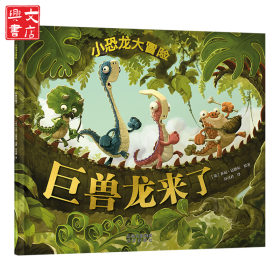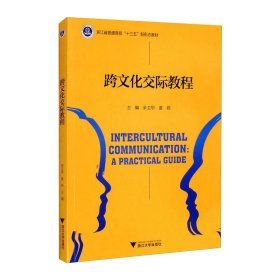
跨文化交际教程/余卫华
正版保障 假一赔十 可开发票
¥ 42.17 7.7折 ¥ 55 全新
库存3件
作者编者:余卫华//谌莉
出版社浙江大学出版社
ISBN9787308181778
出版时间2021-06
装帧平装
开本16开
定价55元
货号29252971
上书时间2024-10-20
- 最新上架
商品详情
- 品相描述:全新
- 商品描述
-
前言
目录Chapter 1 Brief Introduction to Intercultural Communication
1.1 Culture as Intercultural Communication
1.1.1 Two Types of Culture
1.1.2 Five Dimensions of Culture
1.1.3 Characteristics of Culture
1.1.4 Definition of Intercultural Communication
1.2 Approaches to Intercultural Communication
1.2.1 Five Elements in Communication Process
1.2.2 Tips on How to Communicate Effectively
Chapter 2 Verbal and Nonverbal Communication
2.1 Introduction to Verbal Communication
2.1.1 Role of Language in Verbal Communication
2.1.2 Receptive and Productive Language Skills
2.1.3 Need for Using Bias-free Language
2.1.4 Types of Verbal Communication
2.2 Introduction to Nonverbal Communication
2.2.1 Definition of Nonverbal Communication
2.2.2 Major Types and Main Features of Nonverbal Communication
2.3 Major Functions of Nonverbal Communication
2.3.1 Nonverbal Communication Conveys Meaning
2.3.2 Nonverbal Communication Regulates Conversational Flow
2.3.3 Nonverbal Communication Affects Relationships
2.3.4 Nonverbal Communication Expresses Our Identities
2.4 Deception and Nonverbal Communication Competence
2.4.1 Concept and Misinterpretation of Deception
2.4.2 Deception Detecting Abilities and Bias
2.4.3 Misconception of Nonverbal Leakage
2.4.4 Typical Giveaway Signs of Deception
2.5 Getting Competent
2.5.1 Guidelines to Improve Nonverbal Competence
2.5.2 Applicable Advices in Specific Channels
Complementary 1 : Scripts of Julian Treasure's TED Lecture---How to Speak So that People Want to Listen
Complementary 2: Scripts of Amy Cuddy's TED Lecture--Your Body Language May Shape Who You Are
Chapter 3 Communicative Competence and Intercultural Communication Competence
3.1 Communicating Under Different Cultural Contexts
3.1.1 Differences in Greetings
3.1.2 Differences in Approval and Disapproval Movements
Complementary: Signs Not to Use Casually Abroad
3.2 From Communicative Competence to Intercultural Communication Competence
3.2.1 Framework for Communicative Competence
3.2.2 Concept of Communicative Competence
3.2.3 Concept of Transcultural Competence
3.2.4 Skills of Multilingual Communicators
3.2.5 Components of Intercultural Communication Competence
3.3 Case Study: Cultural Clashes in Japanese Story
3.4 A Recipe for Successful Intercultural Communication
3.4.1 A Heart Set
3.4.2 A Mindset
3.4.3 A Skill Set
3.4.4 Other Practical Approaches
3.5 Culture Shock
3.5.1 Five Phases of Culture Shock
3.5.2 Reverse Culture Shock
3.5.3 Outcomes of the Adjustment Phase
3.5.4 Transition Shock
Chapter 4 Stereotype and Prejudice
4.1 Stereotype and Prejudice: American Party
4.1.1 Definition of Stereotype
4.1.2 Types of Stereotype
4.1.3 Definition of Prejudice
4.1.4 Ways to Reduce Stereotypes and Prejudices
4.2 Gender Stereotype: Perfect Women
4.2.1 Definition of Gender Stereotype
4.2.2 Four Basic Kinds of Gender Stereotype
4.2.3 Stereotype Threat
4.2.4 Impact of Female Stereotype in Ancient China
4.2.5 Impact of Female Stereotype in Modern China
4.2.6 Tips for Reducing Gender Stereotype
4.3 Classism: The Poor vs. the Rich
4.3.1 Definition and Nature of Prejudice
4.3.2 Definition of Classism
4.3.3 Causes for Prejudice
4.4 Ethnic Prejudice: African Americans
4.4.1 Definition of Ethnic Group
4.4.2 Definition of Ethnic Prejudice
4.4.3 Effects of Prejudice
4.4.4 Strategies for Reducing Ethnic Prejudice
Chapter 5 Chinese Culture
5.1 Yellow Civilization: The Loess Plateau
5.1.1 The Loess and the Loess Plateau
5.1.2 Agricultural Civilization and Ethnic Integration
5.1.3 Mellow Civilization and National Spirit
5.2 Spiritual Origin: Confucianism
5.2.1 Confucianism, Confucius, and Confucian Classics
5.2.2 Confucianism in the East
5.2.3 Confucianism in the West
5.3 Chinese Education
5.3.1 Confucian Education
5.3.2 Chinese School System: 1922-1932
5.3.3 Higher Education Reform After the "Cultural Revolution"
5.4 Yuanming Yuan
5.4.1 Construction of Yuanming Yuan
5.4.2 Destruction ofYuanming Yuan
5.4.3 Mourn for Yuanming Yuan
5.5 Chinese Festivals
5.5.1 Spring Festival
5.5.2 Lantern Festival
5.5.3 Qingming Festival
5.5.4 Dragon Boat Festival
5.5.5 Double Seventh Festival
5.5.6 Mid-autumn Festival
5.5.7 Double Ninth Festival
5.5.8 Winter Solstice Festival
5.6 Chinese Cuisine
5.6.1 Chinese Regional Cuisines
5.6.2 Types of Chinese Cuisines
5.6.3 Relation to Chinese Art
5.7 Chinese Costume--Qipao
5.7.1 History
5.7.2 Origin
5.7.3 Variation Through History
Chapter 6 Western Culture
6.1 Blue Civilization: Ancient Greece
6.1.1 Cradle of Blue Civilization
6.1.2 History of Ancient Greece
6.1.3 Legacies of Ancient Greece
6.2 Religious Origin: Christianity
6.2.1 Birth of Christianity
6.2.2 Spread and Triumph of Christianity
6.2.3 Impacts of Christianity
6.3 American Education
6.3.1 American Educational History
6.3.2 American Educational System
6.3.3 American Educational Hallmarks
6.4 Chateau de Versailles
6.4.1 Western Garden Art Before Chateau de Versailles
6.4.2 History of Chateau de Versailles
6.4.3 Layout and Features of Chateau de Versailles
6.5 Western Festival---Christmas
6.5.1 Customs and Traditions
6.5.2 Decorations
6.5.3 Traditional Cuisine
6.5.4相关推荐
— 没有更多了 —
此功能需要访问孔网APP才能使用暂时不用打开孔网APP -





















以下为对购买帮助不大的评价